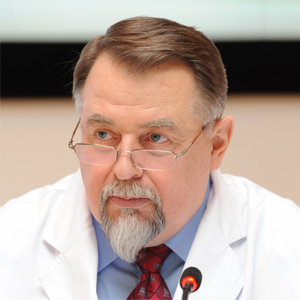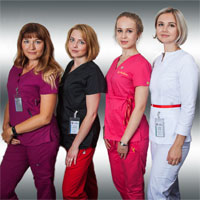Chief of the department: Samkova Anastasia Sergeevna, M.D., Ph.D., otorhinolaryngologist of the highest category.
What Do We Treat
Even if your throat does not hurt, your nose breathes freely, and there are no problems with hearing, you need to contact an ENT doctor if you are worried:
- Unpleasant odor from the mouth;
- Headache in the facial and occipital areas;
- Snore;
- Periodic ringing in the ears;
- Change in voice, decrease in resistance to voice loads;
- The need to constantly use drops and sprays for the nose.
Doctors of our department use modern methods for diagnosis and treatment:
- Chronic rhinitis;
- Chronic tonsillitis and pharyngitis;
- Acute and chronic diseases of the nasal cavity and paranasal sinuses;
- Acute and chronic laryngitis;
- Middle and outer otitis;
- Benign neoplasms of mucous membranes and skin of ENT organs;
- Nasal bleeding.
Methods of research and treatment
The work of the otolaryngologist can not be imagined without modern methods of visualization, surgical, physiotherapeutic, audiological equipment.
Doctors of otorhinolaryngology department perform:
- Endoscopic examinations of ENT organs;
- Ultrasound examination of the paranasal sinuses;
- Hearing test — tonal threshold audiometry, impedance measurement / tympanometry;
- Conservative treatment of patients suffering from chronic tonsillitis, including vacuum-drainage of palatine tonsils, treatment with Tonsillor apparatus;
- Non-punctural treatment of sinusitis;
- Radiowave Surgical Treatment on Surgitron:
- Removal of benign neoplasms of the skin and mucous ENT organs;
- Treatment of recurrent nasal bleeding;
- Treatment of snoring — uvulotomy;
- Treatment of chronic granulosa pharyngitis;
- Treatment of compensated and uncomplicated forms of chronic tonsillitis — lacunotomy;
- Treatment of vasomotor rhinitis, chronic hypertrophic rhinitis;
- Excision of the synechia of the nasal cavity.
- Punctures of the maxillary sinuses;
- Dissection of furuncles and abscesses of the ENT organs;
- Fence material for microbiological testing and for PCR diagnostics.
Conducted procedures
Treatment of mucousal part of ENT organs with drugs
The procedure is performed on specialized ENT equipment. We perform fine-dispersed irrigation of the mucous membranes of the nose and pharynx. It is indicated for rhinitis, pharyngitis, laryngitis and tonsillitis. The procedure is a must-have supplement to intra-oral infusions, vacuum drainage of the tonsils.
Washing of tonsils, complex treatment of chronic tonsillitis (one procedure)
Can be performed instrumentally — with the help of a special nozzle on a syringe and an antiseptic solution — or using vacuum. We are equipped with different types of nozzles for vacuum-drainage of tonsils. The washing method and the washing solution are chosen by the doctor taking into account the structure of the tonsils.
After performing the procedure for washing the tonsils, mucous membranes must be treated with drugs.
Instrumental lavage of lacunae of the tonsils is included in the complex treatment of chronic tonsillitis.
Complex treatment includes washing the tonsils (instrumentally or vacuum — drainage) with the treatment or cauterization of the tonsillar mucosa and the posterior pharyngeal wall.
The number of procedures, the frequency of the procedures is individual and will be determined by the doctor at the reception.
Intra-oral infusion
It is carried out for the treatment of inflammatory diseases of the larynx. Used for sore throat, with voice changes, reduced tolerance to voice loads.
The effect of the procedure is anti-inflammatory, anti-edematous effect on the mucous membrane of the larynx and vocal folds.
An obligatory addition to the infusion into the larynx is the treatment of the pharyngeal mucosa, the laryngopharynx with medicinal preparations.
Removing the sulfur plug
The sulfur plug is a conglomerate of compressed sulfur and epithelium, tightly surrounding the external auditory canal. Removing the sulfur plug is a must! In the presence of sulfuric cork, it is possible to develop external and secondary otitis media, hearing loss, dizziness, headache. According to the doctor’s decision, the manipulation is performed by an instrumental — dry method — or by washing.
Toilet of external auditory canal
In the case of otitis development, the external auditory meatus can contain not only sulfur, but also epidermal masses, remnants of medicines, pus or fungal masses. In this case it is extremely important to additionally clean the skin of the auditory canal with the use of medicines, antiseptics.
Introduction to the auditory canal of a tampon with medicinal substances
It is performed with external and middle otitis media. The doctor enters the auditory canal after examination and purification of turundas with anti-inflammatory, antibacterial, antifungal or epithelial drugs.
The blowing of the auditory tubes by Polititzer method
The blowing of the auditory tubes by Politzer method is a therapeutic and diagnostic manipulation, consisting in the introduction of air under pressure through the nose and then through the Eustachian tube into the middle ear cavity. The procedure is carried out with a special balloon or with an ENT combine. The procedure is performed to equalize the pressure in the middle ear cavity. Improves the patency of the auditory tube, the outflow of fluid from the tympanic cavity, improves the blood supply of the tympanic cavity. The number of procedures per course is
Massage of eardrums
Massage of eardrums (pneumomassage) — a procedure aimed at improving the mobility of tympanic membranes. A special device supplies variable pressure to the external ear canal — the eardrum oscillates. When the procedure is performed, the mobility of the eardrum is normalized, and the blood supply to the middle ear improves. Pneumatic massage combined with blowing, catheterization of auditory tubes contributes to a speedy recovery in the pathology of the middle ear. The procedure is painless and easily tolerated by all patients.
The procedure is in addition to blowing through the auditory tubes and catheterization.
The number of procedures per course is
Catheterization of the auditory tube with the administration of a drug substance (on the one side)
In cases when the pathology of the middle ear for recovery is not enough blows and pneumomassage, the doctor can conduct a catheterization of the auditory tube. Through the nasal cavity to the mouth of the auditory tube, the doctor brings a special catheter, through which medication is blown into the auditory tube with a balloon. If necessary, the manipulation is performed under local anesthesia. Most often the procedure is supplemented by blowing and / or pneumomassage.
Number of procedures per course
Rinsing of the nasal cavity and paranasal sinuses by the method of movement
Nasal mucosa is one of the first barriers to infection. That is why so often we are faced with inflammatory diseases of the nasal cavity and paranasal sinuses. Rinsing of the nasal cavity can be prescribed for acute and chronic rhinitis, sinusitis, rhinopharyngitis and adenoiditis. The doctor will select the required frequency and frequency of the procedures, the medicament for rinsing, and also the washing position — basically, the procedure is carried out in a horizontal position, however, some patients are seated. For washing, use warm physiological solution with the addition of antiseptics or anti-inflammatory drugs.
A mandatory addition to washing the nasal cavity is the subsequent treatment of the nasal mucosa, nasopharynx with medicinal substances.
Number of procedures per course
Puncture of the maxillary sinus on one side
Puncture of the maxillary sinus is not the most pleasant of the arsenal of ENT procedures. However, one can not deny its necessity for certain patients. Our doctors will carefully perform anesthesia in order to minimize the unpleasant sensations.
Postoperative sanitation of ENT organs
The key to successful surgical treatment is often postoperative care. To prevent the formation of adhesions in the nasal cavity after operations, to improve breathing and with an anti-inflammatory purpose with the help of vacuum suction and manually perform the removal of mucus and crusts.
A mandatory addition to the procedure is the subsequent treatment of the mucous drug substances.
Number of procedures per course
Contact Information
Address: Moscow, Gagarinsky lane, 37 (metro station Smolenskaya of the Arbatsko-Pokrovskaya line or metro station Kropotkinskaya)
Phone:













